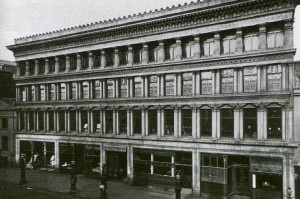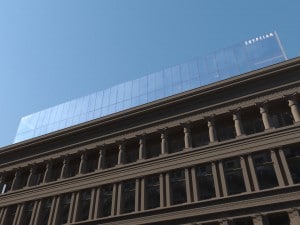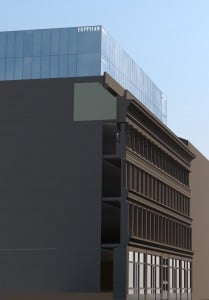 Late in 2012 we helped USP Ltd and USI Ltd gain Planning and Listed Building permissions to bring Alexander ‘Greek’ Thomson’s iconic Egyptian Halls back into use. The building has been largely vacant for over 30 years. It sits at an important position on Union Street in Glasgow and its refurbishment has the potential to act as a catalyst for the regeneration of this part of the city centre.
Late in 2012 we helped USP Ltd and USI Ltd gain Planning and Listed Building permissions to bring Alexander ‘Greek’ Thomson’s iconic Egyptian Halls back into use. The building has been largely vacant for over 30 years. It sits at an important position on Union Street in Glasgow and its refurbishment has the potential to act as a catalyst for the regeneration of this part of the city centre.
The Alexander Thomson Society describes the Category A Listed Egyptian Halls as an architectural masterpiece. It is widely recognised as ‘Greek’ Thomson’s finest commercial building – an internationally significant part of Glasgow’s and Scotland’s built heritage.
Unfortunately, the Egyptian Halls has been in physical decline over a long period, despite concerted efforts over many years by the current owners and Glasgow City Council to restore the property to sound condition and productive use. It has long been listed on Historic Scotland’s Buildings At Risk Register.

A low point was reached in 2011, when commercial issues led to an unsuccessful application by the ground floor owners to demolish the building. The owners openly stated this was not the route they preferred to follow and it was clearly an approach neither the public, the upper floor owners, Glasgow City Council or Historic Scotland endorsed.
There is undoubtedly broad and passionate support for saving the Egyptian Halls, although the need for a viable scheme is also widely recognised. The approved scheme was devised to accommodate active interest from hotel, bar and restaurant operators. It involves extensive restoration of the building, although the rear wall needs to be replaced. A glazed roof extension extends the floorspace.
There has always been a serious funding issue with this project due to the high cost of remedial works. The owners had aimed to overcome these difficulties through a commercially driven approach but recently established the Egyptian Halls Building Preservation Trust in an effort to access Heritage Lottery Fund resources. A recent application for funding has been turned down but the Trust is set to make a revised application in the next six months.

Needless to say, there are endless worthy projects competing for resources these days and it’s not easy to prioritise the allocation of scarce funds. We can only hope that this important part of Scotland’s culture and architectural heritage can ultimately be saved through the collaborative powers of public and private investment. That outcome would be due in no small part to the exceptional resilience and commitment of the project architects, the Morrison Partnership, as well as the building owners.
